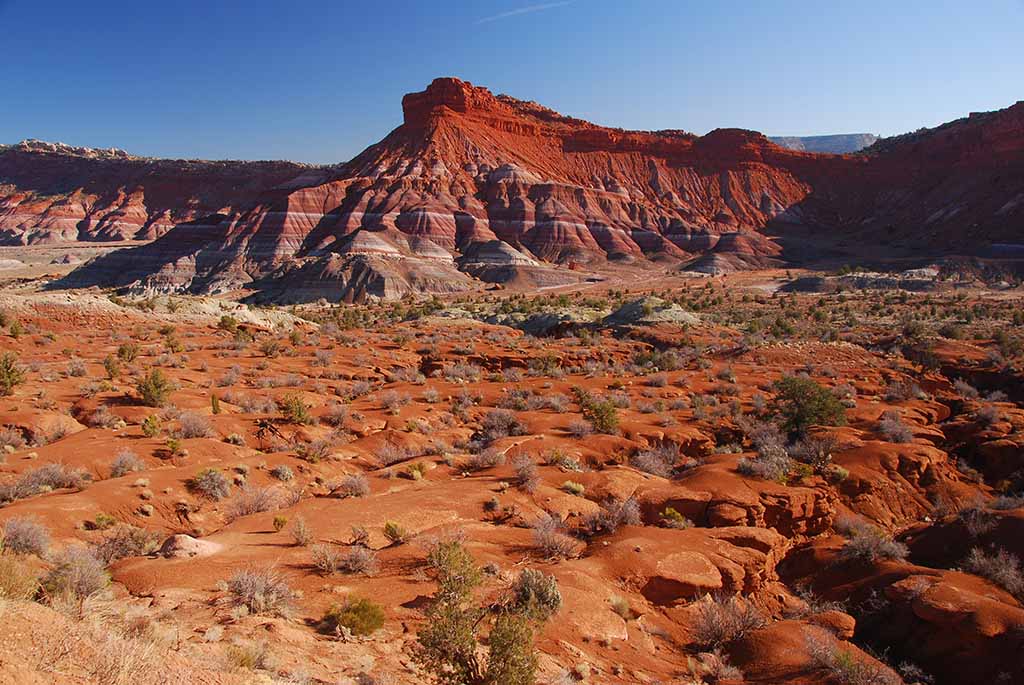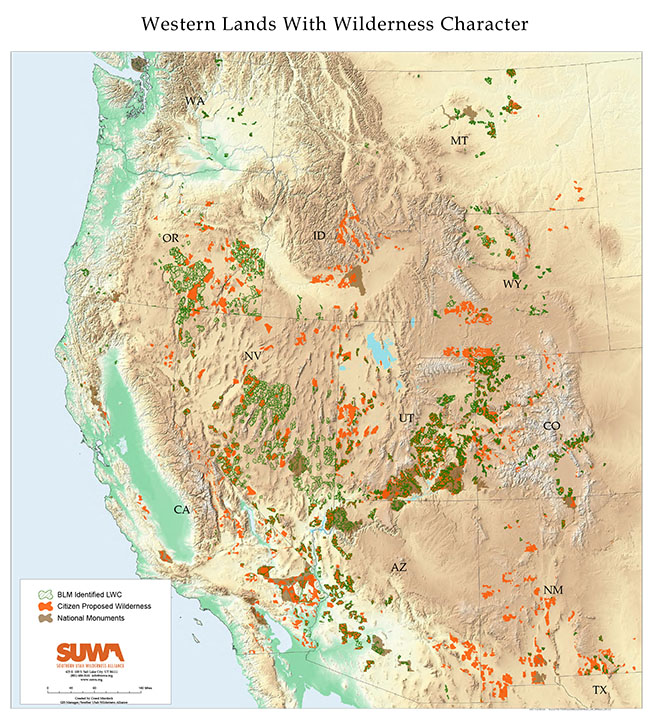Scientists are telling us there is a nature crisis to go along with the climate crisis. The growing loss of wild places—healthy, functioning natural areas—is driving a record-shattering loss of species.
Protecting the climate and biodiversity through the 30×30 initiative is one of the most important things the Biden administration can do for current and future generations. To support that goal, the Biden administration should assert the Bureau of Land Management’s (BLM) authority to designate new “wilderness study areas” pursuant to § 202 of the Federal Land Policy and Management Act (FLPMA).
The Issue: A wilderness study area or “WSA” is a term of art with significance at BLM and the Interior Department. WSA designation matters because these lands get “on track” for wilderness consideration and often form the floor for negotiations in congressional wilderness legislation.
All WSAs are part of the National Landscape Conservation System—highlighting their durability and importance among our nation’s treasured lands. BLM staff view WSAs differently than other administrative designations, as the agency is legally required to manage them under FLPMA’s “non-impairment” standard—a strict mandate intended to protect the wilderness character of these areas. Under the Federal Onshore Oil and Gas Leasing Reform Act, WSAs are statutorily off-limits to oil and gas leasing.

From 1976 to 2003, BLM consistently exercised its discretion and authority to establish § 202 WSAs across the West. This designation was a significant tool in the BLM’s management toolbox, allowing the agency to protect wilderness-quality lands and preserve the opportunity for Congress to decide whether to permanently designate them as Wilderness in the future.
In 2003, former Interior Secretary Gale Norton entered into an out-of-court settlement agreement5 with the State of Utah in which the Interior Department took the novel legal position that BLM lacked the authority to designate new WSAs under FLPMA § 202. This settlement amounted to a dramatic reversal of BLM’s well-established authority to designate and protect WSAs, and has curtailed the agency’s ability to protect roadless lands that qualify as wilderness under the Wilderness Act.

No new § 202 WSAs have been designated since 2003. As a result, millions of acres of roadless BLM-managed public lands across the West remain unprotected and at risk from fossil fuel development and off-road vehicle damage.
Designating and managing roadless, wilderness-quality public lands as WSAs under § 202 offers a two-fold benefit for tackling climate change and the interconnected 30×30 goals of saving nature. First, protecting intact roadless lands as WSAs provides measurable carbon sequestration benefits and also serves to conserve water resources and reduce fugitive dust emissions. Second, protecting public land as WSAs keeps fossil fuels in the ground and eliminates the release of climate damaging pollution related to the exploration, production, and combustion of those extractive resources.
What to do: As the nation’s largest federal land manager, the BLM has the responsibility to take decisive action to address the climate crisis. One significant way to meet this challenge is for the BLM to assert its authority to designate wilderness study areas under FLPMA § 202—an action that will result in durable protection for large swaths of roadless public lands throughout the West.
While the BLM considers pursuing this path, it must preserve the status quo and halt work on all projects that threaten to impair these places. The prior administration set many plans in motion (e.g., oil and gas lease sales, vegetation removal projects, and travel management planning) that need to be revisited with this administration’s policies in mind.
It’s places like the redrock wilderness of southern Utah where preservation will help address climate change and save nature. Large wild landscapes connected to others similarly wild can, if protected, retain carbon fuels in the ground, reduce green- house gases in the atmosphere, and provide healthy homes and climate refuges for wildlife.
For our future, it’s job one.
The time to act is now. Please ask Interior Secretary Deb Haaland to resume the use of the BLM’s FLMPA Section 202 authority to establish new wilderness study areas.

